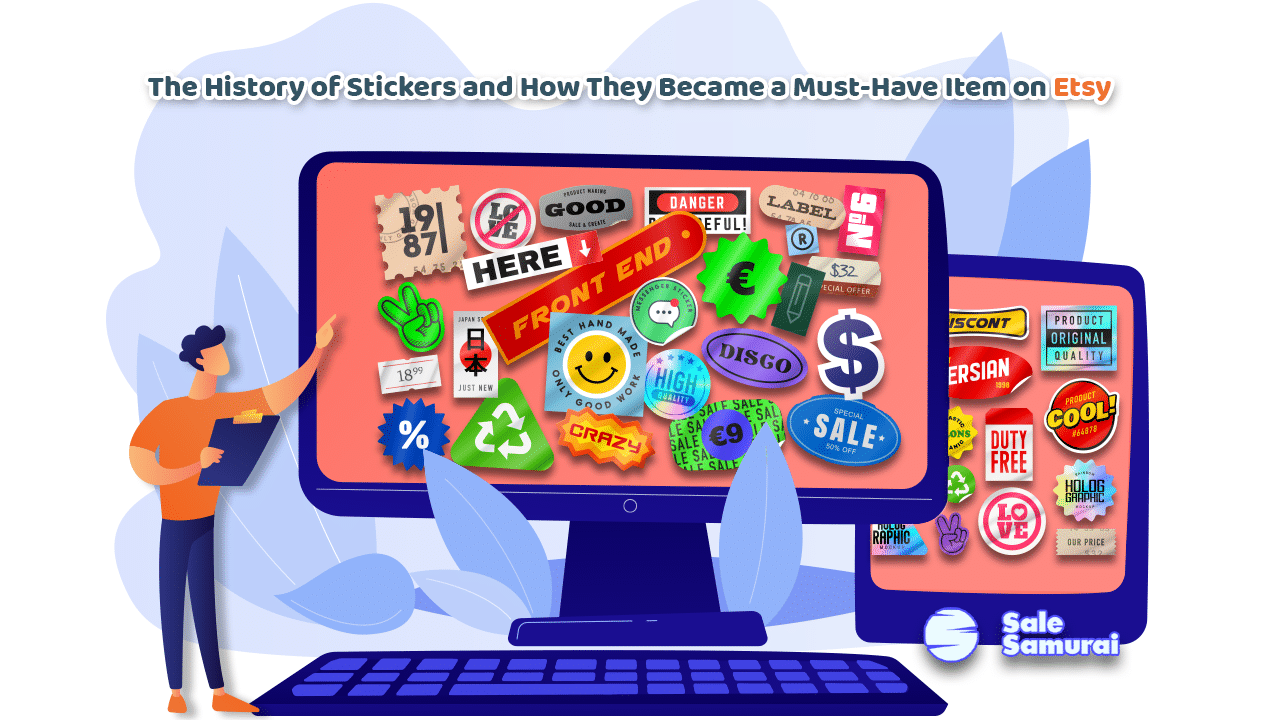
Go anywhere in the last few decades, any public spaces especially in a major American city, and you will see stickers placed everywhere the eye can see. On public transportation, road signs, school seats, laptops, notebooks, everywhere. They are utilized by sports fans to denote their presence around their home stadium and when they go to away games. They are tools of expression for people with something to say about themselves, the music they like best, their hobbies and special interests, or how they see the world. And this is a trend that continues to this day.
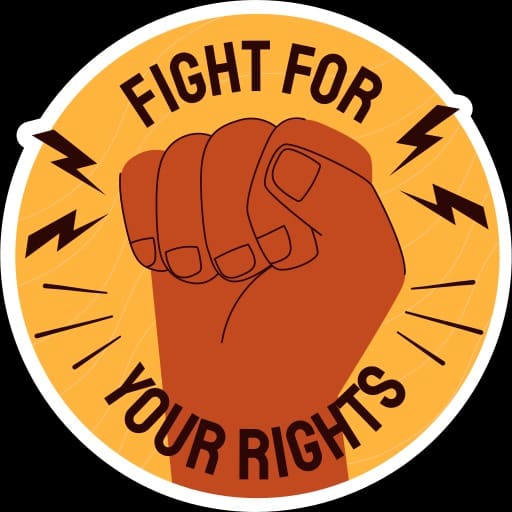
Although most of these examples are light-hearted and not to be taken too seriously, many stickers are devoted to promotion of political ideologies and resistance; they can support protest marches or rallies, radical or subversive beliefs, or unbending conservative viewpoints, as well as promote slogans and symbols from protest groups and social movements. By definition, stickers are small, self-adhesive pieces of paper, vinyl, or plastic that range from hand-drawn to professionally printed versions. This makes them inexpensive to create in large number and they are quite simple to distribute.
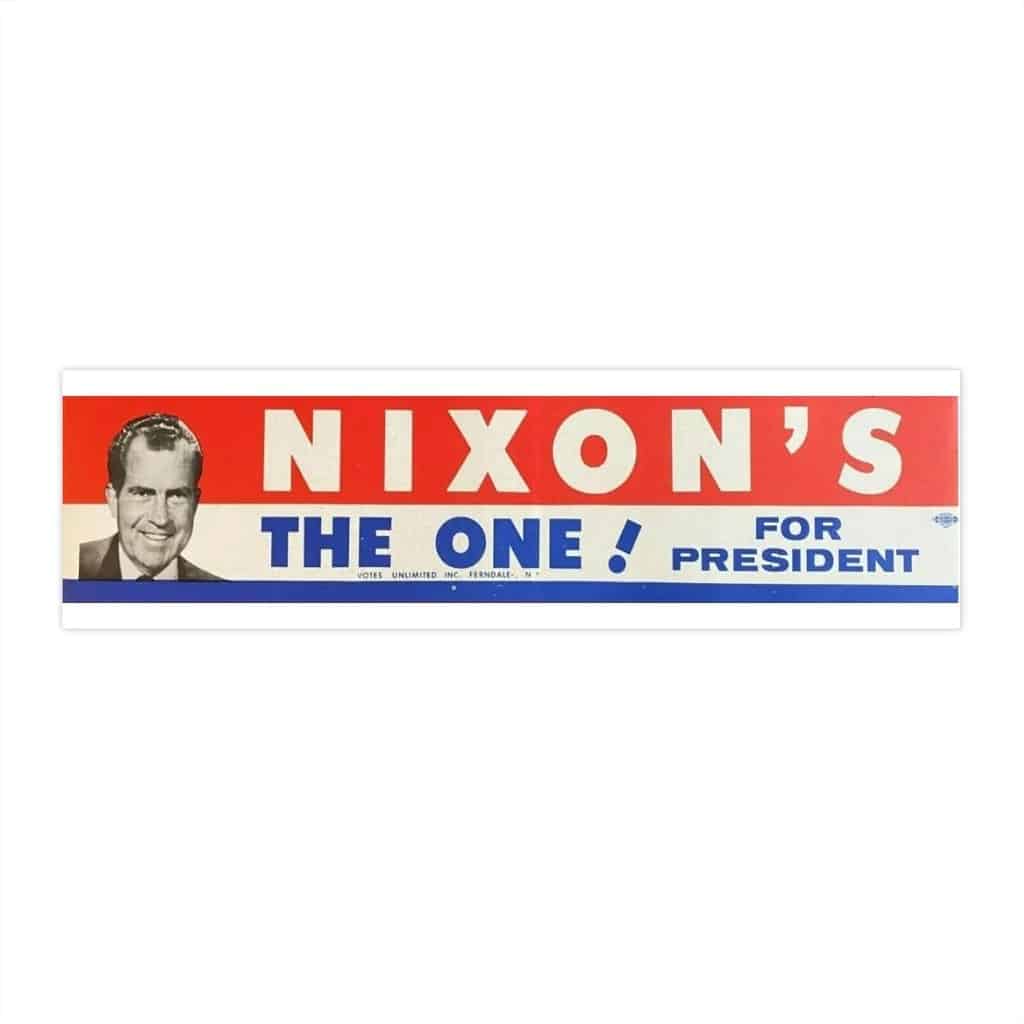
The 1970s
My first exposure to such things was as a kid in the 1970’s, the heyday of the “bumper sticker”, when cars still had unpainted bumpers. They were everywhere, and you could tell where someone had gone or what they believed in just by reading what they displayed on the backs of their cars and vans. Living across from a large parking lot near a beach, I saw them all and would love finding new ones, especially the ones that kids weren’t supposed to see! But amongst the peace signs and stickers calling for certain things to be legalized, there would also be bumper stickers with Richard Nixon’s name on them. It was interesting to see how so many different people came together to enjoy that summer place.
The 1980s
Come the 1980’s, and the music scene stickers dominated everything. To this day, I have the remnants of them on old gear cases and notebooks, celebrating places and bands that, while the biggest things in the world then, no longer exist today. At one point, we were wearing them on our clothes as a form of jewelry. But through it all there were protest stickers, the ones pushing social agenda and political views. And they quickly became the standard thing and continue in that vein to this day.
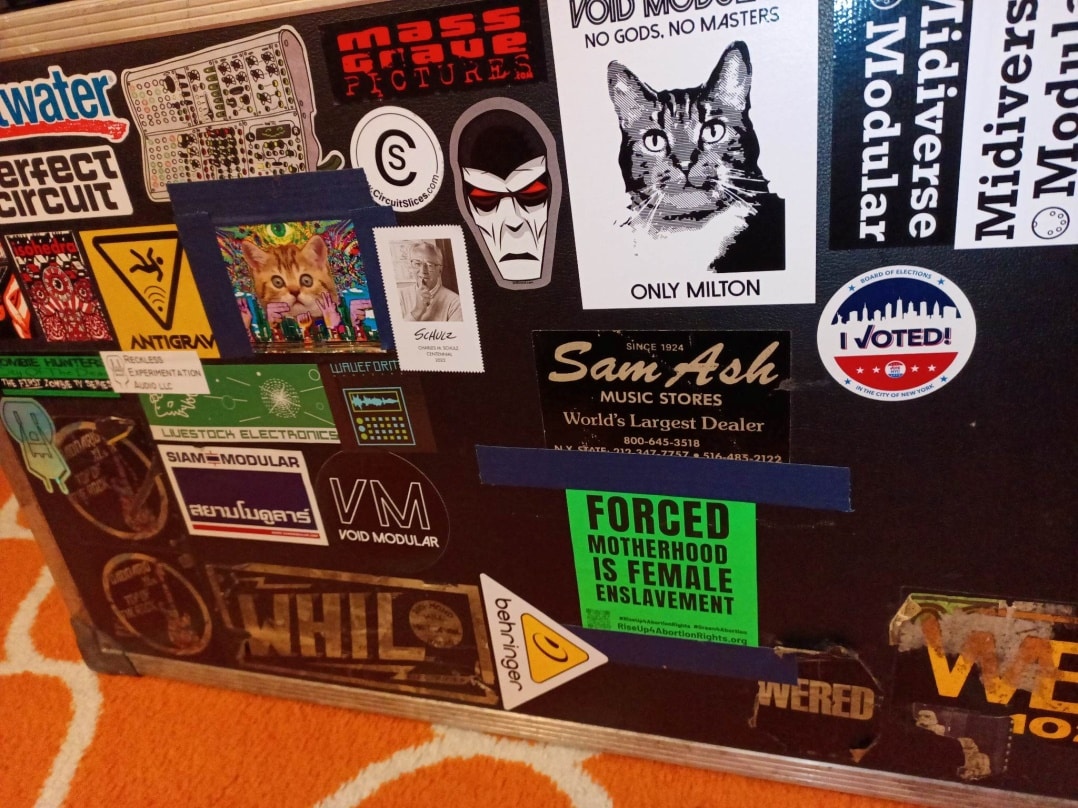
( One of the author’s flightcases, with stickers going back to 1983 )
As diverse as the causes they support are the purposes of protest stickers and the motivations of those who manufacture and/or display them. Various individuals may have quite different reasons for placing the same sticker. Occasionally, they are used to promote specific events such as meetings, rallies, and organized protests. They can be a sign of solidarity; for instance, the ongoing turmoil in Ukraine has resulted in stickers and signs on lawns reading “I Stand with Ukraine”, while in the same neighborhoods you might find the opposite, with the slogans of “America First” standing in opposition to those who feel we should understand the plight of other nations. Stickers are also a technique to indicate communal rather than individual support for an organization or cause; they create a form of “belonging” to an idea or a cause as the person displays them.

Stickers are also the ideal product for this due to their size and nearly non-existent weight. They can be carried by an activist, easily mailed, or the design can be emailed or downloaded from a website with the physical stickers being printed in a different place. Sometimes protest stickers are sold to earn funds for additional campaign activities, or their designs are made accessible online for anyone to print and distribute. Even something as seemingly neutral as the common “I Voted” stickers handed out freely at polling places can send very different messages depending on the individual person displaying them. In this sense, context is everything.
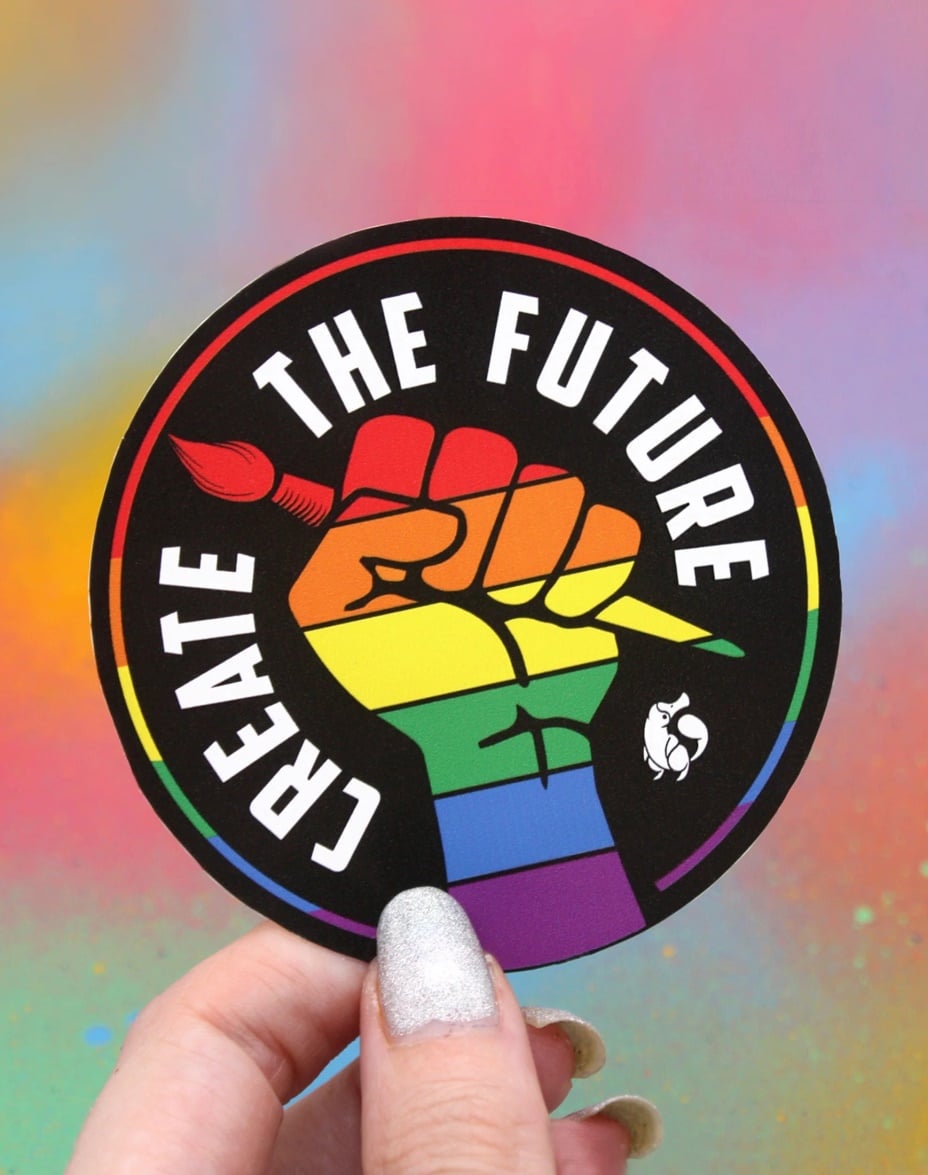
The quantity and subject matter of protest stickers vary between cities and indeed, within different regions of the same city. I come from New York City, and what I would see stuck on things in Greenwich Village would be quite different than what I’d see in Brooklyn. Despite this geographical heterogeneity, several themes can be discernible. There are typically more stickers in metropolitan areas than in rural ones, and the larger the city, the more stickers you are likely to encounter. Residential regions have fewer stickers than city centers and commercial areas, due to individual property owners taking faster action to remove them from their structures. Several sorts of protest stickers are particularly prevalent in particular regions; for instance, stickers pertaining to student politics tend to be prevalent on and around universities and college campuses. These trends presumably reflect the locations where activists commonly travel or spend their time, as well as considerations regarding where a sticker could reach the largest audience. If it’s not seen by others, the sticker itself is pointless.
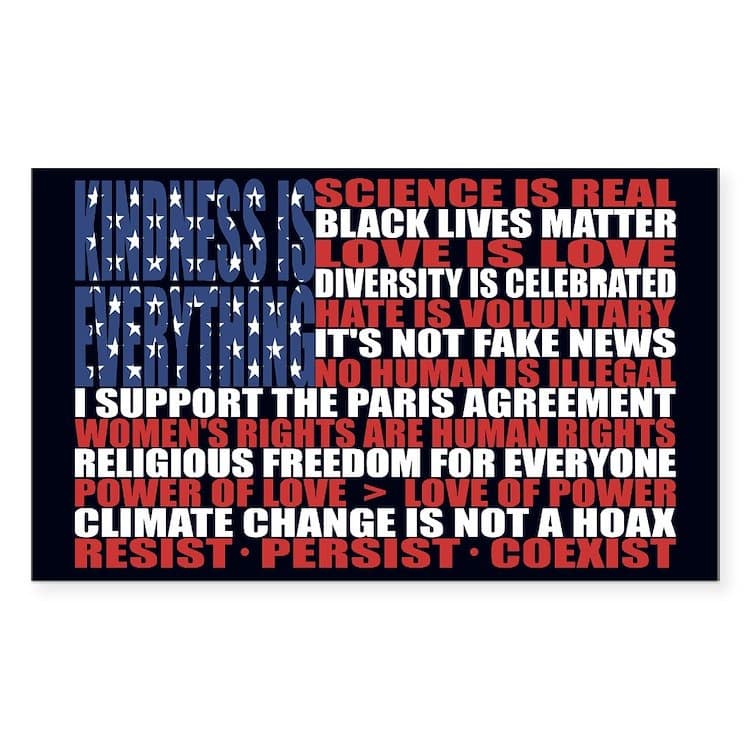
A savvy POD business owner might do well to look into these sorts of things as potential additional revenue each year, especially around the times of major elections (Presidential and mid-terms here in the US). And personal feelings do not need to come into play, as a print manufacturer sells to a wide variety of people each year anyhow, so why would this be any different? Opposing viewpoints can be produced and sold by the same vendor and really all that does it promote the discourse the nation was built upon while (potentially) doubling sales. A free market enterprise system is another cornerstone of the US.
Some research into the symbolism of protest or support movements could also benefit the POD sticker maker, seeing what symbology is being used today, what it means, and what sort of market there could be for it. And offer custom versions as well, demarking specific dates or upcoming events. Before long, you could turn into the go-to person for those looking to express their First Amendment rights and speaking to redress the world around them!





